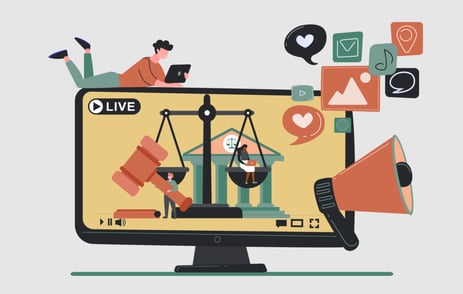Now more than ever, associations are using their voices to stand up for what they believe in. However, one thing has been holding many back: the inability to gather for their causes. With the social distancing measures put into place due to COVID-19 making advocacy efforts more difficult, many associations have turned to social media to spread awareness and request support.
Gamify your call to action
People like to win. Whether it be scoring points, climbing a leaderboard, challenging a friend, receiving merchandise or even simple acknowledgement, creating a sense of competition within your call to action increases your audience's willingness to participate.
The ALS Association did just that with the Ice Bucket Challenge, a viral advocacy effort that relied directly on the public to respond to and challenge their peers. Supporters’ efforts raised over $115 million dollars, according to The New York Times.
“The Ice Bucket Challenge was a global phenomenon, thanks to the generosity of millions of people, resulting in a tremendous amount of awareness of the disease and spurring a huge increase in our research spending,” said Calaneet Balas, president and CEO of The ALS Association.
Like the ALS Association’s Ice Bucket Challenge, having your members utilize social media through a clever or funny call to action is a great way to drive awareness and engagement to your cause. Hashtags, branded images and peer-supported actions are great ways to increase momentum for your movement.
Utilize advocacy platforms
Your organization does not have to work alone because there are many platforms associations can utilize for their advocacy efforts. Phone2Action is a platform with extensive experience advocating in the non-profit sector. It integrates grassroots advocacy and public affairs products through email, Twitter, Facebook, patch-through calling and regulatory forms.
“We had clients like the National Restaurant Association and the American Nurses Association mobilizing hundreds of thousands of people,” Jeb Ory, CEO of Phone2Action, said in a recent interview. “They got nearly 600,000 letters that were customized and personalized going to lawmakers.”
Utilizing a secondary advocacy platform to boost interaction with your campaign is a beneficial and simple addition to your advocacy strategy that could influence your outcomes tremendously.
Fake it ‘til you make it
One of the most fulfilling parts of advocating for a cause is the hands on learning and relationship building experiences during in-person lobbying or advocacy events. While we may not be able to be physically present due to COVID-19, there are many virtual resources that can be used to temporarily replace in-person activity.
Gather.town is a virtual conference platform that has the ability to mimic water-cooler conversations found in the halls of traditional get-togethers. Using this platform or other virtual gathering tools like Zoom or HouseParty as a way to gather supporters for an at-home letter writing campaign or to present updated information to advocates is a great way to stay connected and keep engagement high in your campaign.
Tags:
Advocacy
August 19, 2020


